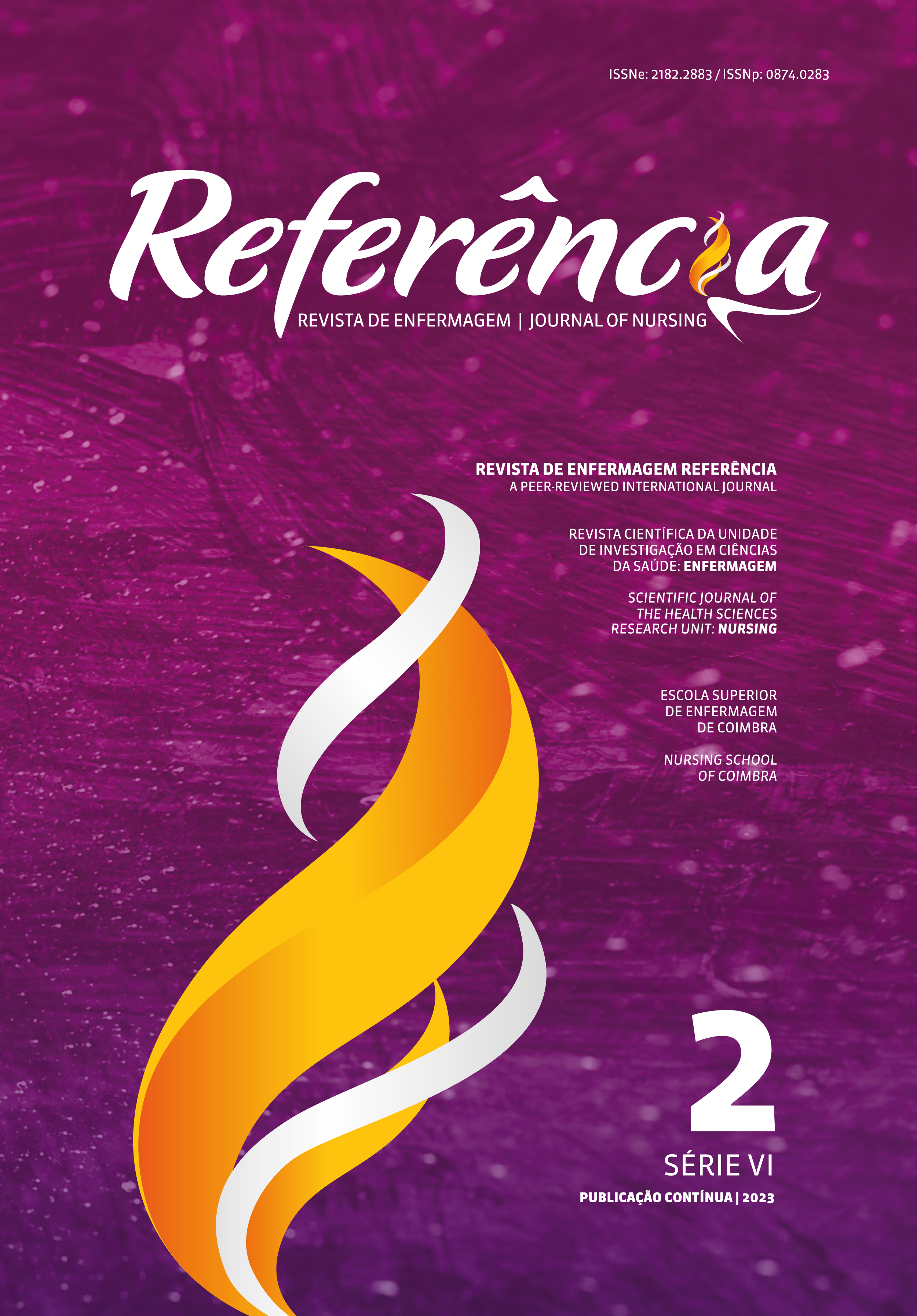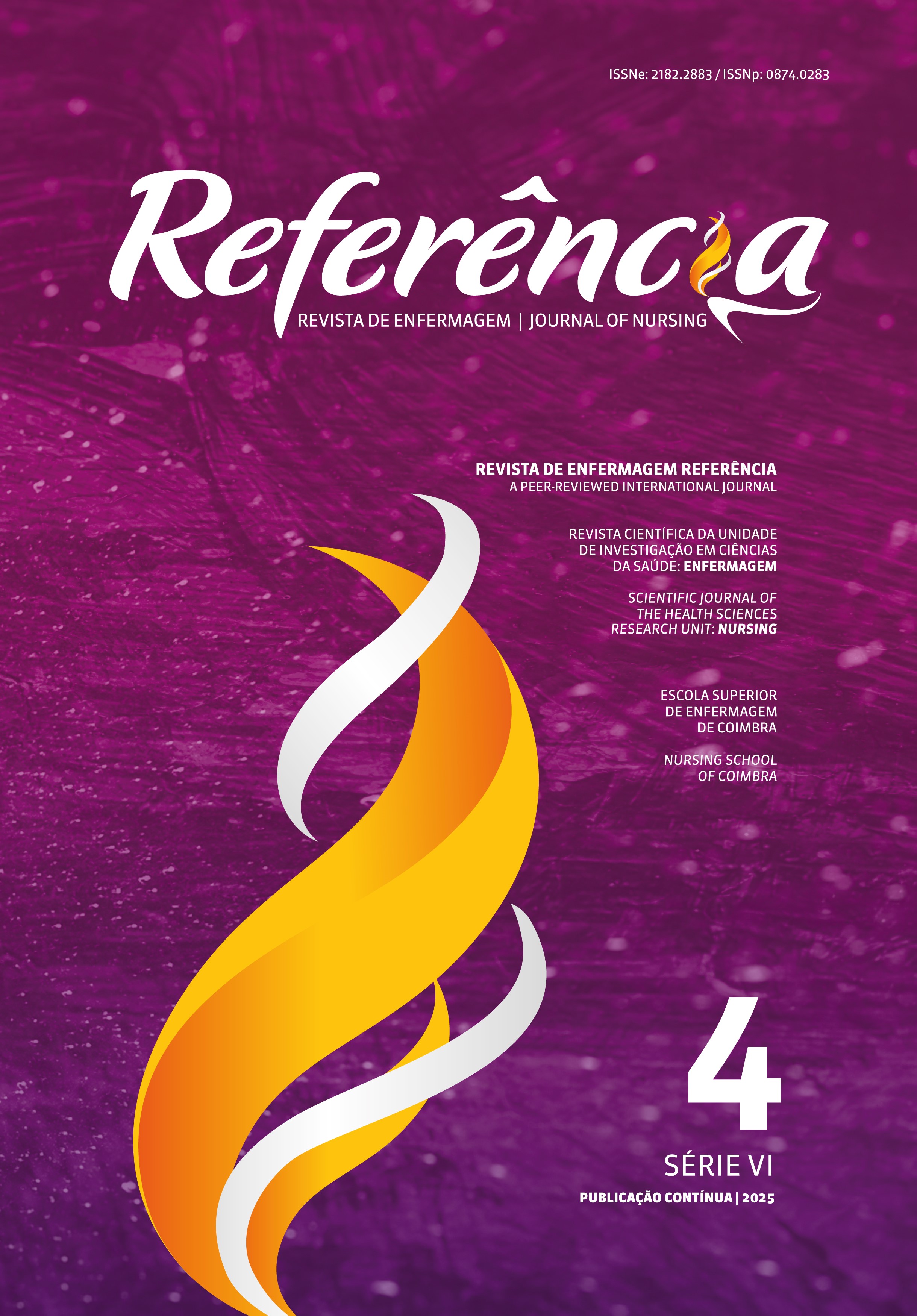Early rehabilitation for critically ill patients with ICU-acquired weakness: A quasi-experimental study
DOI:
https://doi.org/10.12707/RVI22057Keywords:
critical care, critical care outcomes, rehabilitation nursing, muscle weaknessAbstract
Background: Intensive care unit-acquired weakness is a severe complication, and early rehabilitation can improve health outcomes in critically ill patients.
Objective: To examine the health outcomes sensitive to rehabilitation nursing care in critically ill patients diagnosed with intensive care unit-acquired weakness.
Methodology: This quasi-experimental study uses a non-probability sample of 80 patients distributed between an experimental group and a control group (CG). The groups received the same rehabilitation nursing care intervention, differing only in the number and frequency of implementation due to the different time intervals of each group.
Results: EG participants revealed a greater functional independence in the transfer, greater muscle strength at the moment of discharge, decreased mean number of days under sedation, receiving invasive mechanical ventilation and of hospitalization, and lower scores in the Therapeutic Intervention Scoring System-28 at the moment of discharge.
Conclusion: The increased number and frequency of rehabilitation nursing care interventions improved health outcomes in critically ill patients.
Downloads
References
Cullen, D. J., Civetta, J. M., Briggs, B. A., & Ferrara, L. C. (1974). Therapeutic intervention scoring system: A method for quantitative comparison of patient care. Critical Care Medicine, 2(2), 57–60. https://pubmed.ncbi.nlm.nih.gov/4832281/
Data Management Service of the Uniform Data System for Medical Rehabilitation and the Center for Functional Assessment Research. (1986). Australian guide for use of the uniform data set for medical rehabilitation including the functional independence measure: Version 3.1. State University of New York at Buffalo.
Eggmann, S., Verra, M. L., Luder, G., Takala, J., & Jakob, S. M. (2016). Effects of early, combined endurance and resistance training in mechanically ventilated, critically ill patients: A study protocol for a randomised controlled trial. Trials, 17(403), 1–11. https://doi.org/10.1186/s13063-016-1533-8
Eggmann, S., Verra, M. L., Luder, G., Takala, J., & Jakob, S. M. (2018). Effects of early, combined endurance and resistance training in mechanically ventilated, critically ill patients: A randomized controlled trial. Plos One, 13(11), 1–19. https://doi.org/10.1371/journal.pone.0207428
Ely, E. W., Truman, B., Shintani, A., Thomason, J. W., Wheeler, A. P., Gordon, S., Francis, J., Speroff, T., Gautam, S., Margolin, R., Sessler, C. N., Dittus, R. S., & Bernard, G. R. (2003). Monitoring sedation status over time in ICU patients: Reliability and validity of the richmond agitation-sedation scale (RASS). Journal of the American Medical Association, 289(22), 2983–2991. https://doi.org/10.1001/jama.289.22.2983
Gruther, W., Pieber, K., Steiner, I., Hein, C., Hiesmayr, J. M., & Paternostro-Sluga, T. (2017). Can early rehabilitation on the general ward after an intensive care unit stay reduce hospital length of stay in survivors of critical illness?: A randomized controlled & trial. American Journal of Physical Medicine Rehabilitation, 96(9), 607-615. https://doi.org/10.1097/PHM.0000000000000718
Hashem, M. D., Nelliot, A., & Needham, D. M. (2016). Early mobilization and rehabilitation in the ICU: moving back to the future. Respiratory care, 61(7), 971-979. https://doi.org/10.4187/respcare.04741
Huang, D., Zhao, W., Chen, Y., Shen, B., Wang, Y., Guan, H., & Luo, W. (2021). Effect of mechanical ventilation and pulmonary rehabilitation in patients with ICU-acquired weakness: A systematic review and meta-analysis. Annals of Palliative Medicine, 10(9), 9594-9606. https://doi.org/10.21037/apm-21-1928
Lang, J. K., Paykel, M. S., Haines, K. J., & Hodgson, C. L. (2020). Clinical practice guidelines for early mobilization in the ICU: A systematic review. Critical Care Medicine 48(11), e1121–e1128. https://doi.org/10.1097/CCM.0000000000004574
Gall, J. R., Loirat, P., Alperovitch, A., Glaser, P., Granthil, C., Mathieu, D., Mercier, P., Thomas, R., & Villers, D. (1984). A simplified acute physiology score for ICU patients. Critical Care Medicine, 12(11), 975-977. https://doi.org/10.1097/00003246-198411000-00012
Medical Research Council. (1943). Aids to the examination of the peripheral nervous system. Her Majesty’s Stationery Office.
Moreno, R., & Morais, P. (1997). Outcome prediction in intensive care: results of a prospective, multicentre, Portuguese study. Intensive Care Medicine, 23, 177–186. https://doi.org/10.1007/s001340050313
National Institute for Health and Care Excellence. (2020). Supporting adult carers. https://www.nice.org.uk/guidance/ng150/resources/supporting-adult-carers-pdf-66141833564869
Nassar Junior, A. P., Pires Neto, R. C., Figueiredo, W. B., & Park, M. (2008). Validity, reliability and applicability of Portuguese versions of sedation-agitation scales among critically ill patients. Sao Paulo Medical Journal, 126(4), 215–219.
https://www.scielo.br/j/spmj/a/mp4wKYWf6pf8TbqMbGmSH6j/?lang=en&format=pdf
Nydahl, P., Diers, A., Günther, U., Haastert, B., Hesse, S., Kerschensteiner, C., Klarmann, S., & Köpke, S. (2018). Protokollbasierte mobilisierung auf Intensivstationen: Design einer clusterran domisierten pilotstudie. Medizinische Klinik – Intensivmedizin Und Notfallmedizin, 113(7), 581–592. https://doi.org/10.1007/s00063-017-0358-x
Piva, S., Fagoni, N., & Latronico, N. (2019). Intensive care unit–acquired weakness: Unanswered questions and targets for future research. F1000Research, 8(508), 1–10. https://f1000research.s3.amazonaws.com/manuscripts/19002/81f9b867-6957-446f-9de1-88a0568d2266_17376__latronico.pdf?doi=10.12688/f1000research.17376.1&numberOfBrowsableCollections=94&numberOfBrowsableInstitutionalCollections=4&numberOfBrowsableGateways=51
Knaus, W. A., Zimmerman, J. E., Wagner, D. P., Draper, E. A., & Lawrence, D. E. (1981). APACHE-acute physiology and chronic health evaluation: A physiologically based classification system. Critical Care Medicine, 9(8), 591-597. https://doi.org/10.1097/00003246-198108000-00008
Schoeller, S. D., Martins, M. M., Ribeiro, I., Lima, D. K., Padilha, M. I., & Gomes, B. P. (2018). Breve panorama mundial da enfermagem da reabilitação. Revista Portuguesa de Enfermagem de Reabilitação, 1(1), 6–12. https://doi.org/10.33194/rper.2018.v1.n1.01.4388
Vanhorebeek, I., Latronico, N., & Van den Berghe, G. (2020). ICU-acquired weakness. Intensive Care Medicine, 46(4), 637–653. https://doi.org/10.1007/s00134-020-05944-4
Vincent, J. L., Mendonça, A., Cantraine, F., Moreno, R., Takala, J., Suter, P. M., Sprung, C. L., Colardyn, F., & Blecher, S. (1998). Use of the SOFA score to assess the incidence of organ dysfunction/ failure in intensive care units: Results of a multicenter, prospective study. Critical Care Medicine, 26(11), 1793-1800. https://doi.org/10.1097/00003246-199811000-00016






















